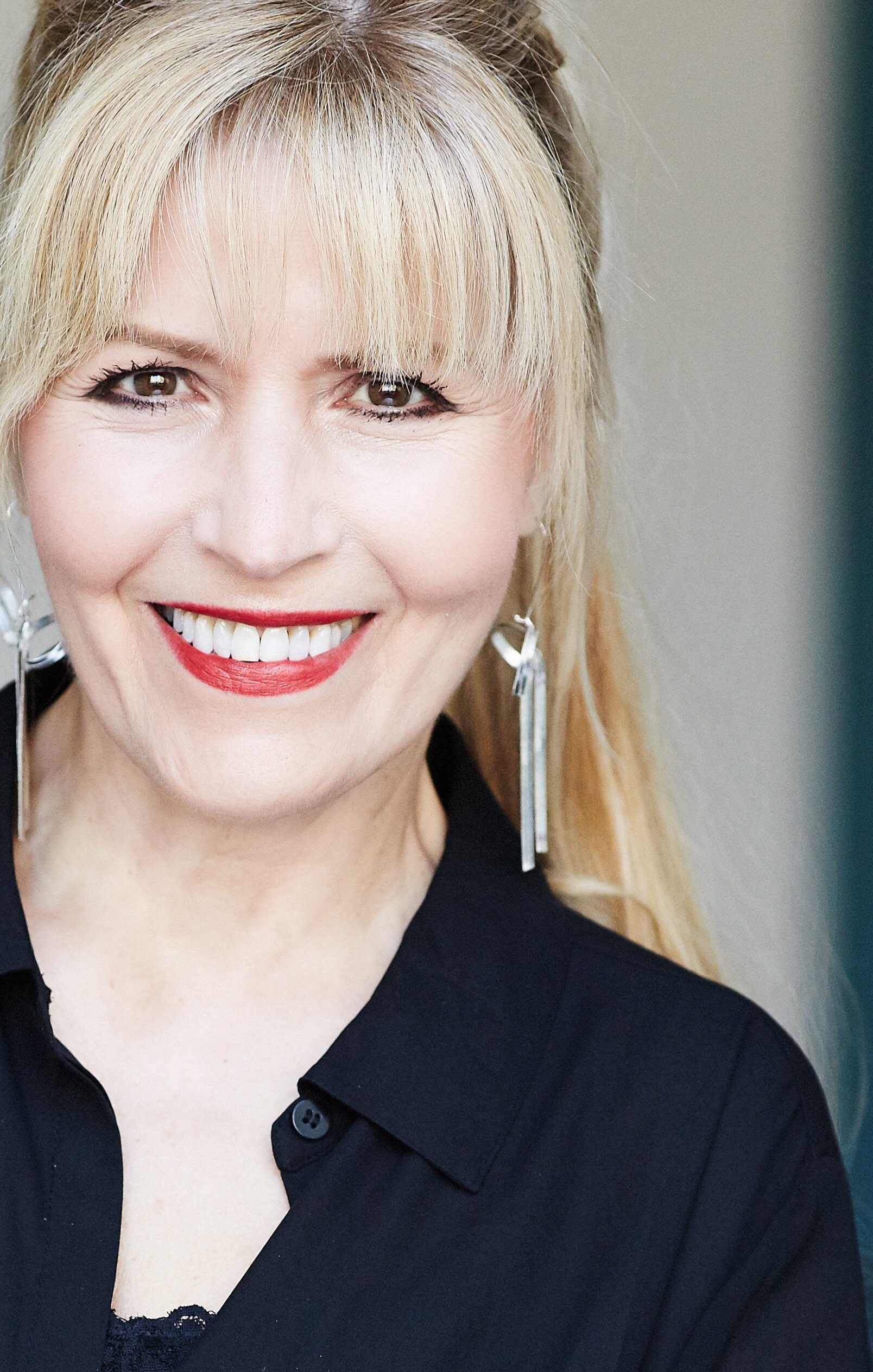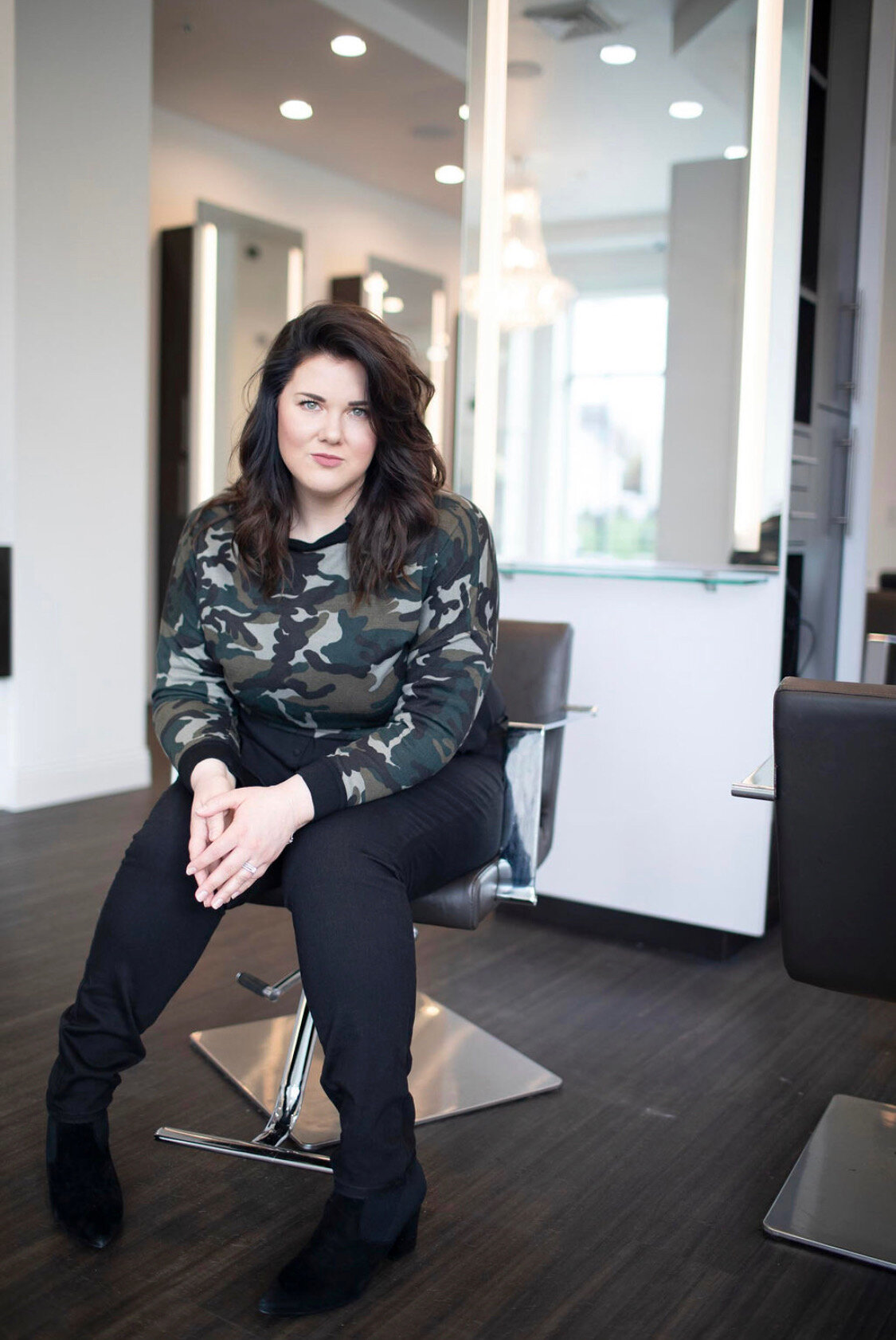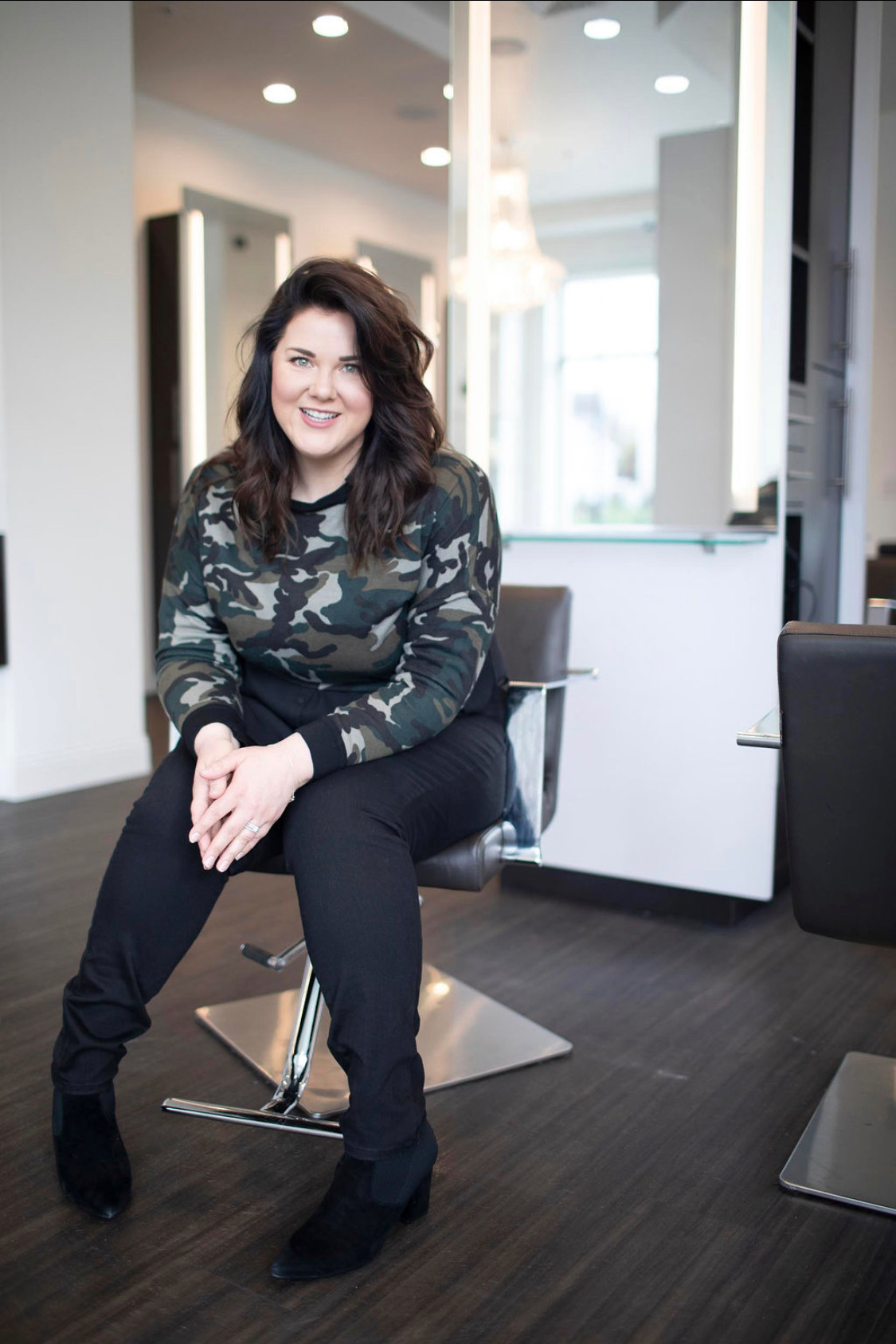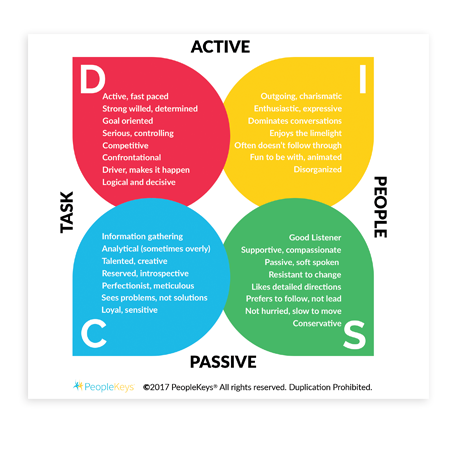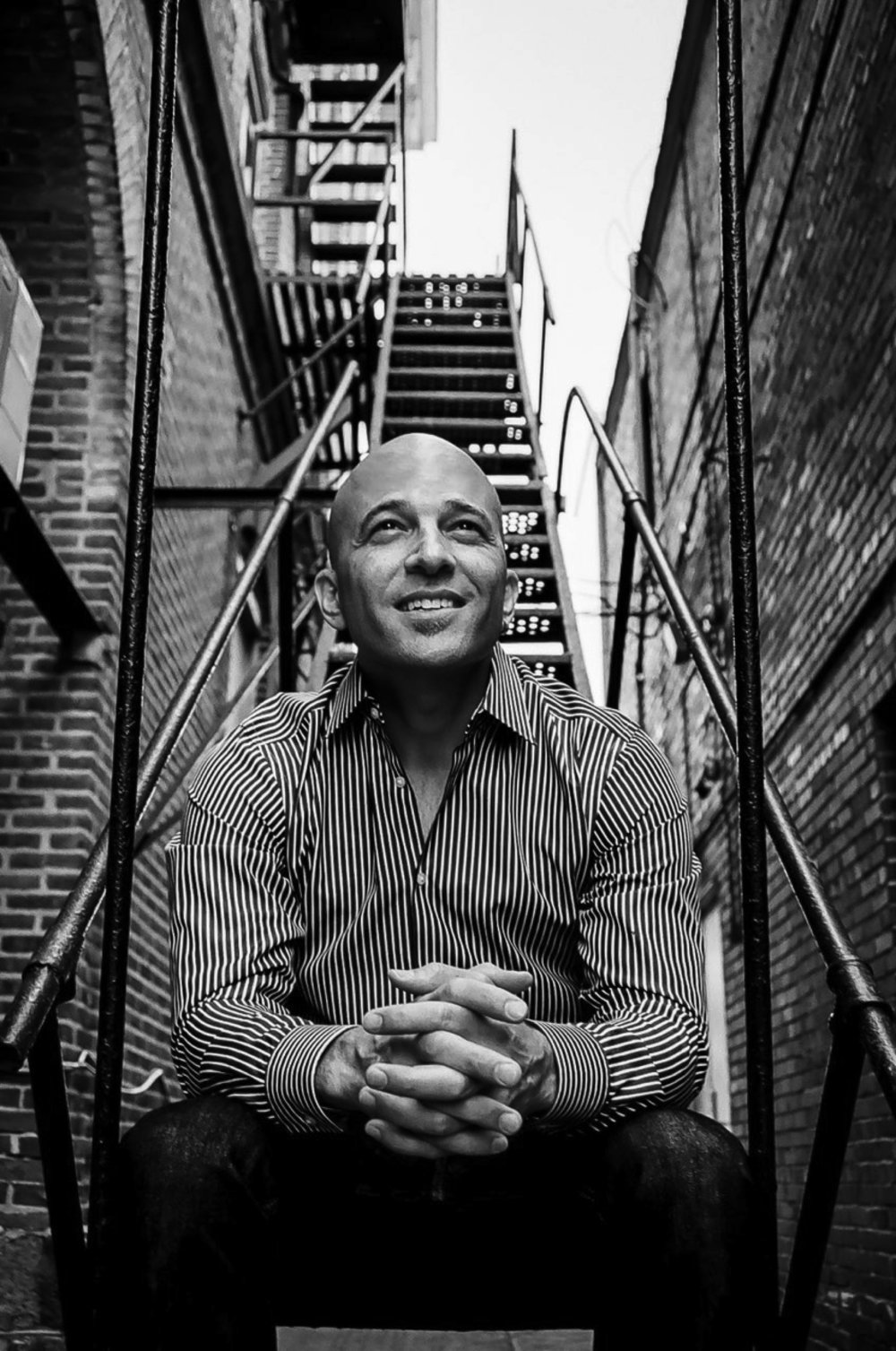Do you ever feel ashamed or embarrassed to talk about your profession? I’m sure I’m not the first to tell you that you shouldn’t be, but unfortunately, the reality is that many of us are. Especially when conversing with someone from outside of the beauty industry.
This is exactly why we’re sharing Karen Cunningham’s mission with you all today. Karen’s goal is to reverse the negativity associated with our industry so that every stylist, barber, makeup artist and nail technician can have the courage to feel overwhelmingly proud of what they do.
Karen Cunningham is the co-owner of Hair Junkie Salon in Williston Park, NY. Karen is also an educator for KMS. Her mantra is “education is the key to artistic freedom”, and she travels the world with their national artistic team teaching live from the stage. She has been in the beauty industry for over 30 years and her work has been published in Modern Salon, Beauty Launchpad, Hairbrained and Estetica Magazine.
She has won a number of accolades and has been the lead stylist on some incredible projects, from productions and photo shoots to New York Fashion Week runway looks along with the incredible journey of working behind the chair while running her own successful salon. Karen is always working to perfect her craft. She’s always on the hunt for new and diverse experiences to add to her repertoire from within and outside of our incredible industry.
Karen’s Beginnings in Beauty
Like many of us, Karen didn’t always know that she would end up in beauty, but after being introduced to the industry by a friend who was attending cosmetology school she decided to look into it herself and quickly fell in love.
While Karen’s family and friends were, for the most part, approving of her decision to follow her dreams, Karen knows that for many, that isn’t the case.
Karen got her first taste of the general disapproval and disdain aspiring beauty industry professionals are met with when her partner’s niece expressed interest in cosmetology back in high school. She wanted to become a hairstylist and she was incredibly passionate about joining the industry but her parents weren’t for it.
They expressed concerns over income, job stability and even told her outright that she would never be happy working in such a field. Karen was beside herself. She couldn’t understand why there was such a negative energy associated with her beloved industry.
The Weight of This Negative Energy is Real
While Karen admits that she had it pretty easy in comparison, she too can reflect on times when her own career choices were put into question. She can recall the “bad vibe” associated with becoming a hairdresser and the shame she felt when everyone else began going off to college and she was just starting her career in the salon. Even though she was technically getting a head start and earning a living doing something she loved, Karen remembers feeling like her decisions were generally frowned upon.
Karen’s passion for this topic continues to grow tremendously as she bares witness to the weight this negativity has had on the industry as a whole. From her own visits to various cosmetology schools, Karen has noticed that the attendance is very, very low compared to what it used to be.
Not only that, but the young people that are joining the industry aren’t necessarily fueled by the passion to produce results. Instead, they’re settling for this career path because they think it’s the easy way out. They’re not educated and they don’t take their jobs very seriously--why should they? Nobody else does.
What It Really Means to Be in Beauty
Karen has made it her goal to breathe new meaning and life into joining the beauty industry for all of the young creatives out there considering cosmetology. She says that as hair professionals, it starts with us.
It’s up to us to be the role models and spread forth our passion, creativity and artistry. Karen says we should be claiming our profession and proudly sharing it with the world. We should be educating people, especially young people, on the power of perfecting a craft and working in trade so that they feel compelled to join us, and so that those who don’t still respect us.
How Salon Owners Can Help
Then, there’s the other side of this issue. Ask any salon owner--one of the biggest struggles we’re facing in our industry right now is recruiting. One of the major reasons being that there’s such a small pool of qualified candidates to choose from, and the promising candidates are mostly millennials, a term that comes with its own set of negative connotations.
So, Karen believes this begs the question: What do we need to do to get in front of people? Where do we need to go? What needs to change?
For Karen, first thing’s first. She says we need to get rid of the mindset that hiring millennials is bad for business. Karen knows many salon owners who are so set in their ways, and remarks that the real issue starts there.
Sure, the younger generations might have a completely different mindset than many of today’s salon owners, but they’re the future of our industry so if we don’t shift our thinking, the business of beauty will move on without us.
The future of the salon business is all in the culture. The next generation of beauty professionals aren’t out looking for a chair of their own, they’re looking to change the world one client at a time. They want to be a part of something bigger than themselves, something that matters, and they want to work in a salon that lives up to their values. So, it’s up to us to create that environment for them.
And honestly, we could all benefit from getting into a millennial mindset. We are changing the world, and many of us are even earning six figures and having quite a bit of fun doing it. The beauty industry is the place to be, let’s not forget it.
Want to learn more about Karen and her passion for the future of our industry? Listen to the podcast that inspired this blog, episode 198. And if you want more insight on recruiting, I also encourage you to check out our mini-series, “Build Your Best Team This Year!” Episodes 220, 221 and 222 -- we just know that you’re going to love it!




